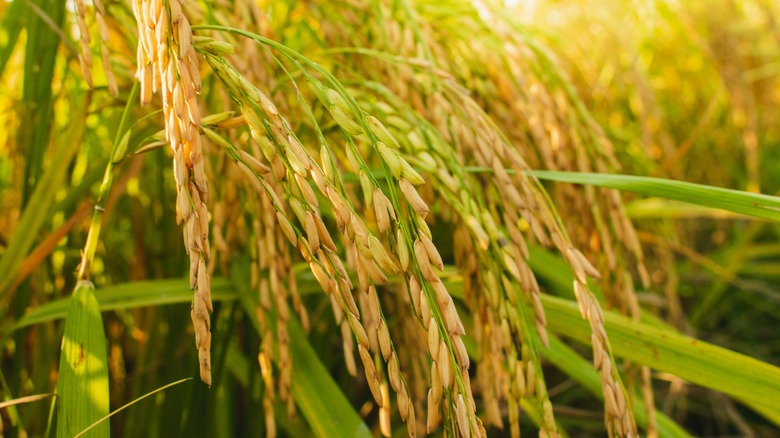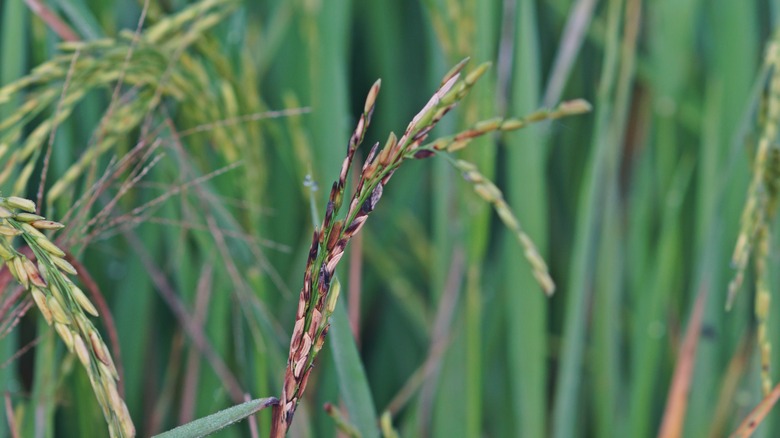How A Major Threat To Rice Crops Is Gaining Resilience
How often do you think about rice? Probably not very much. Rice usually flies under the radar; its inoffensive blandness belies its importance in sustaining life on our planet. According to the Royal Botanic Gardens, Kew, rice is a complex carbohydrate that is the most significant source of energy for half of the people on the planet.
That likely explains why rice is so exceptionally multifarious. There are, says USA Rice, over 120,000 varieties of rice found around the world, when taking into account flavor, aroma, starch content, and milling. Black japonica has a whole-grain nuttiness and can be found in porridges and Chinese cuisine. Short-grain rice offers starchy creaminess to dishes like risotto.
But rice, like all crops, is not without its threats. Science News outlines how climate change and its associated extreme weather, such as droughts and floods, have wrought havoc on rice farmers' ability to plant and harvest crops. And recently, scientists have found that a threat — once thought to be kept well in check — is posing an increased risk to crops at home and abroad.
Genetic revolution
Weedy rice is an innocuous name for a close relative of cultivated rice, one that, upon gaining a toehold within a crop of rice, will compete with — and often dominate — its cousin, says California Weedy Rice, a University of California program aimed at rooting out this nefarious plant. Weedy rice has been kept in check for years using herbicides and herbicide-resistant strains of cultivated rice. But findings from a recent study published in Communications Biology have found that weedy rice is quickly evolving to become herbicide-resistant itself.
This is due to a "genetic revolution," says the study's senior author and Washington University professor Kenneth Olsen, that has seen weedy rice transform "from being very genetically distinct from U.S. crop varieties to nowadays mostly being derived from crop-weed hybridization" (via Washington University in St.Louis). Essentially, as weedy rice has intermingled with cultivated rice in fields, it has taken on the very traits instilled in cultivated rice meant to protect it.
In addition to weedy rice and climate change, rice production faces another threat, one that is exacerbated by climate change. A paper published in Nature Communications details the rise of arsenic concentrations in the soil of rice paddies in California. As rice paddies are irrigated with arsenic — a naturally-occurring, but toxic compound — concentrations grow in the soil. Climate change, and the resultant effect it will have on rice's growth characteristics, will likely increase this trend and lead to a significant decrease in the yield and quality of rice harvests.

